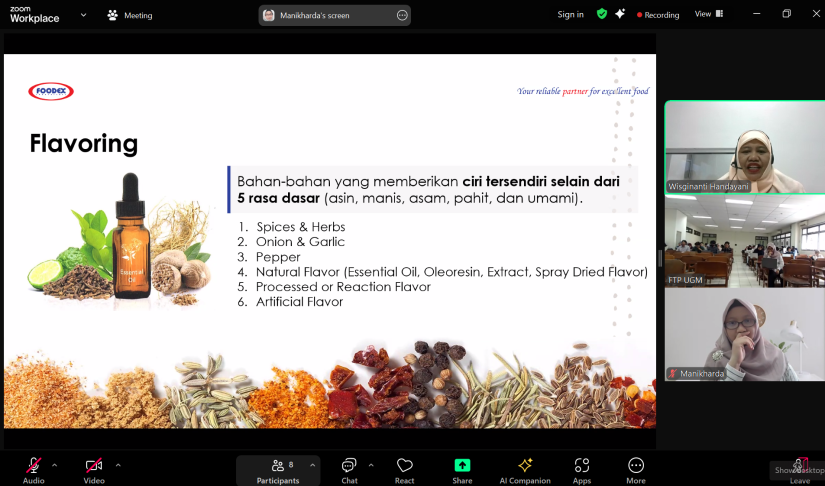
The Department of Food and Agricultural Product Technology (TPHP), Universitas Gadjah Mada, held another guest lecture on Tuesday (May 6), featuring Wisginanti Handayani from PT Foodex Inti Ingredients. The session centred around the rapidly evolving field of flavor technology, particularly in the food industry.
In her presentation, Ms. Wisginanti emphasized that the world of flavour extends far beyond basic taste. It involves a wide range of complementary components, such as spices and herbs, onions and garlic, pepper, as well as processed and artificial flavours—all of which are essential in creating distinctive and consistent taste profiles.
One of the highlights of the lecture was the discussion on flavor enhancers. Despite having little to no aroma, ingredients such as salt, sugar, MSG, yeast extract, and combinations of disodium 5′-ribonucleotides, like IMP and GMP, play a critical role in enhancing and balancing food flavors.
Ms. Wisginanti also emphasized the importance of colour in food products. Color is often the first attribute that consumers notice and has a strong influence on initial product acceptance. Food colorings can be derived from natural sources, such as plants, animals, and minerals, or from synthetic substances that are regulated for safe use.
Equally important is the role of food additives, including bulking agents, stabilizers, preservatives, and antioxidants. These components help maintain product quality and safety while also improving consumer appeal.
To conclude the session, Ms. Wisginanti shared insights on global flavor and seasoning trends projected from 2023 to 2025. Three major themes are expected to dominate: Nusantara Pride, which celebrates authentic Indonesian flavors; Spicy Sensation, which continues to gain popularity worldwide; and International Fusion, reflecting the globalization of taste in local products.
This guest lecture not only broadened students’ understanding of the flavoring industry but also inspired them to think creatively in developing food products that meet market demands. Moreover, the material presented contributes to achieving the Sustainable Development Goals (SDGs), particularly Goals 9 (Industry, Innovation, and Infrastructure) and 12 (Responsible Consumption and Production).
Written by: Firstnandita K
